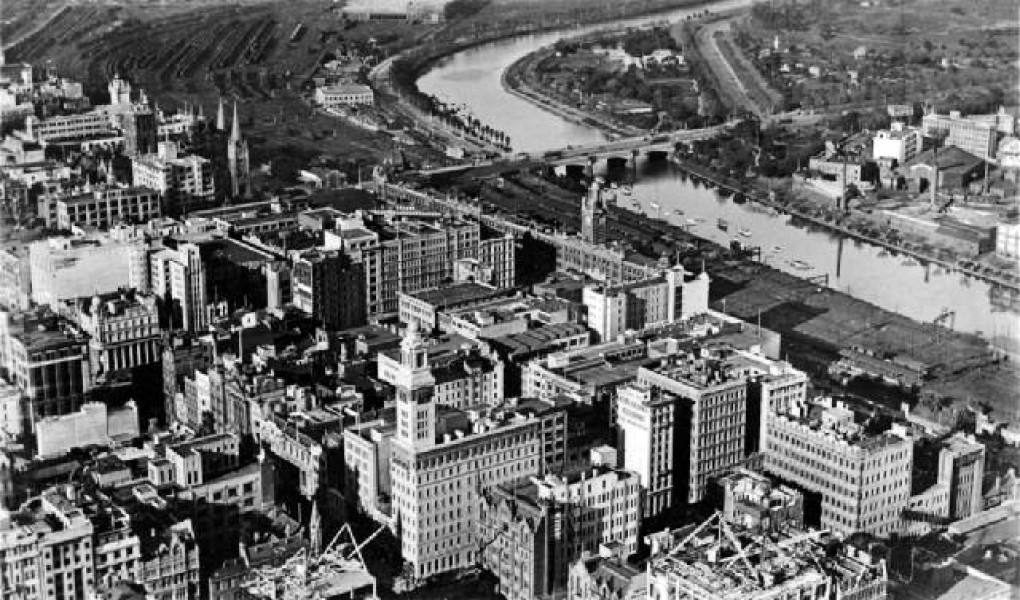Thanks to the Victorian Gold Rush in the 1850s and the land boom of the 1880’s, large parts of inner Melbourne had a markedly classical architectural character. Through The Arts and Crafts movement and the emerging Art Nouveau style the classical influence prevailed throughout Melbourne architecture, most markedly neo-Gothicism marked the Edwardian period. Classic facades characterized the style of the time, red-faced brick rendered brick and intricate stonework.
The classic Edwardian style can be defined by a number of key elements and principles; Buttresses and gothic pointed arches to express the structural engineering upon which the style was based, complex tracery and stained glass windows, Intricate stonework and a plentiful variety of ornament.
One of Melbourne most recognizable Edwardian building is that of St Paul’s Cathedral. Designed by William Butterfield to be constructed in sandstone masonry combining early English and decorative gothic styles.
 St Paul’s Cathedral, View From Flinders St
St Paul’s Cathedral, View From Flinders St
A Number of elements apparent at St Paul’s cathedral reflect strongly on the classical/neo-gothic revival before WW1.
The first striking feature is that of the slender spire protruding from the roof, this is called “Fleche” which translates loosely from French to “arrow, and often uses thorny like stone crafted protrusions and intricate detail which gives the building a grand scale and signifies importance.
Among the other grand buildings of the time, St Paul’s cathedral remained unusual due to its limestone and sandstone construction. This resulted in its warm yellowy-brown appearance, which juxtaposed with the characteristically cold dark blue stone of Melbourne’s other buildings.
When looking from inside we also a wide array of stained glass windows of all sizes and shapes, which both adds ornamentation but lets in natural light.
St. Paul’s Cathedral, Interior
We also see in the above photo the use of Gothic arches, which were used at the time to express the engineering feats.
Until the First World War, the classical style design was very popular, with people looking back into the past in order to portray grandeur and purpose. But after the First World War, and the depression in Melbourne, the designers and people were looking toward a better future instead of harping on the past, and this characteristic of looking forward was the driving force behind modernism in Australia.




